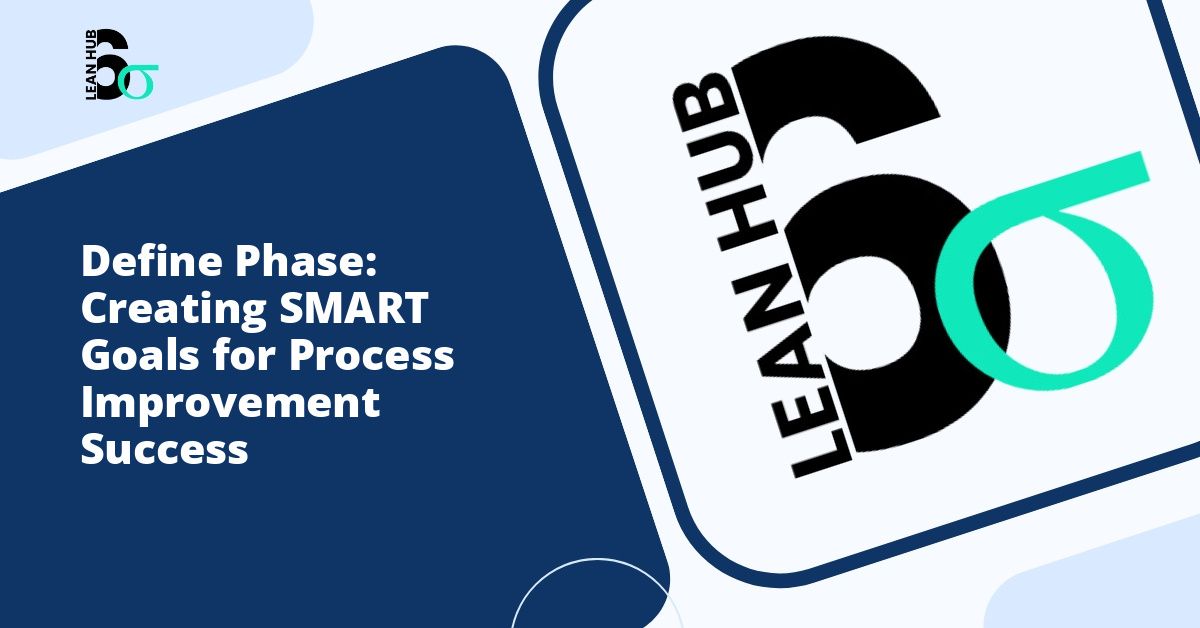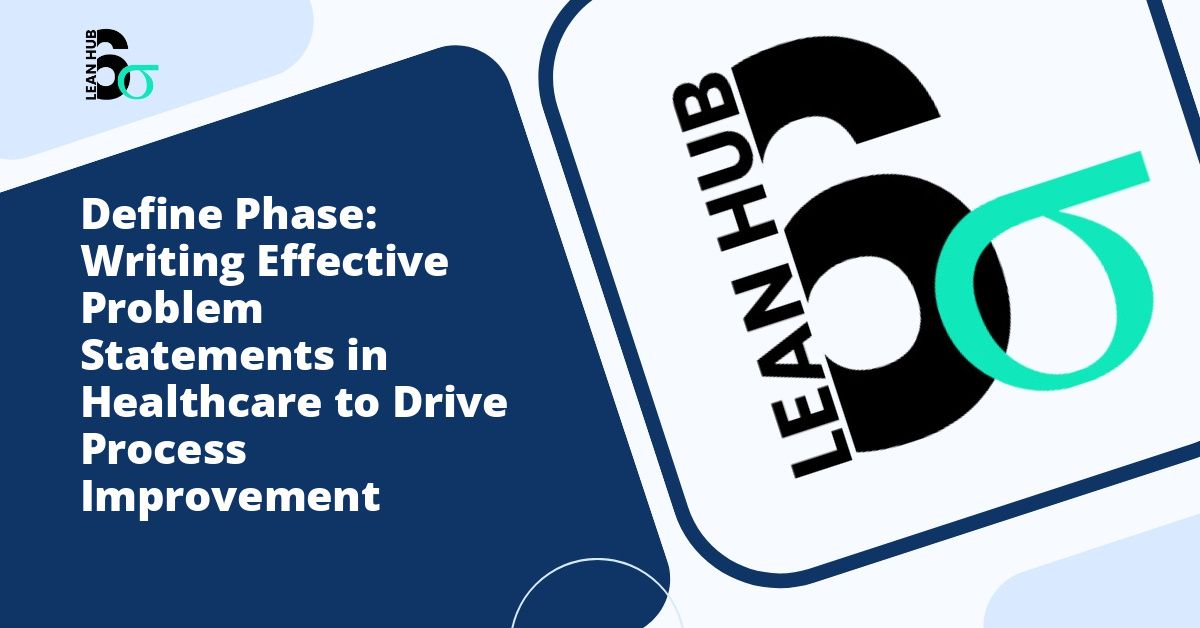The Define phase serves as the foundation of any successful process improvement project. Whether you are implementing Lean Six Sigma methodologies or working through other structured problem-solving frameworks, understanding the appropriate timeline for this critical initial phase can mean the difference between project success and failure. This comprehensive guide will help you determine realistic timelines and establish effective planning strategies for your Define phase.
Understanding the Define Phase in Project Management
The Define phase represents the first step in the DMAIC (Define, Measure, Analyze, Improve, Control) methodology used extensively in lean six sigma projects. During this phase, project teams establish clear objectives, identify stakeholders, outline project scope, and create a roadmap for success. This phase sets the tone for everything that follows, making it essential to allocate appropriate time and resources. You might also enjoy reading about Lean Six Sigma Define Phase: The Complete Guide for 2025.
Before diving into the Define phase, many organizations also incorporate a recognize phase where potential improvement opportunities are identified and evaluated. This preliminary step helps ensure that teams focus their efforts on projects that align with organizational goals and deliver maximum value. You might also enjoy reading about How to Write a Lean Six Sigma Project Charter: Step-by-Step Guide with Examples.
Typical Timeline for the Define Phase
The Define phase typically takes between two to four weeks for most projects, though this timeline can vary significantly based on several factors. Understanding these variables will help you create a realistic schedule for your specific situation. You might also enjoy reading about Project Charter Checklist: 12 Essential Elements Every Six Sigma Project Needs for Success.
Small to Medium Projects
For smaller projects with limited scope and fewer stakeholders, the Define phase can be completed in approximately two to three weeks. These projects typically involve:
- Single department or functional area
- Clear and straightforward problem statements
- Limited stakeholder groups
- Readily available data and documentation
- Experienced team members familiar with the methodology
Large or Complex Projects
Larger, more complex initiatives may require four to six weeks or even longer to properly complete the Define phase. These projects often include:
- Multiple departments or cross-functional teams
- Ambiguous or multifaceted problem statements
- Numerous stakeholder groups with varying interests
- Limited historical data or documentation
- Teams new to lean six sigma or process improvement methodologies
Key Activities Within the Define Phase
To better understand timeline requirements, it helps to break down the Define phase into its core components. Each activity requires dedicated time and attention to ensure thorough completion.
Problem Statement Development
Creating a clear, concise problem statement typically requires three to five business days. This process involves gathering preliminary information, consulting with stakeholders, and refining the statement through multiple iterations. A well-crafted problem statement answers what is wrong, where it occurs, when it happens, and the extent of the issue.
Project Charter Creation
Developing a comprehensive project charter usually takes five to seven business days. This document serves as the project’s constitution, outlining goals, scope, team members, timelines, and expected benefits. The charter requires input from sponsors, team members, and key stakeholders, necessitating coordination and review cycles.
Stakeholder Analysis and Communication Planning
Identifying stakeholders and developing communication strategies typically requires two to four business days. During this activity, teams map out all parties affected by or interested in the project, assess their influence and interest levels, and create tailored communication approaches for each group.
Voice of the Customer (VOC) Collection
Gathering customer requirements and expectations can take anywhere from three to ten business days, depending on the methods used and accessibility of customers. This crucial step ensures that improvement efforts align with actual customer needs rather than assumptions.
High-Level Process Mapping
Creating SIPOC (Suppliers, Inputs, Process, Outputs, Customers) diagrams and high-level process maps generally requires two to four business days. These visual tools help team members develop a shared understanding of the current process and identify boundaries for the improvement project.
Factors That Influence Define Phase Duration
Several variables can significantly impact how long your Define phase will take. Understanding these factors helps in setting realistic expectations and planning accordingly.
Team Experience and Availability
Teams well-versed in lean six sigma methodology can move through the Define phase more efficiently than those new to structured improvement approaches. Additionally, team member availability plays a crucial role. When team members can dedicate focused time to Define phase activities, the phase progresses more quickly than when participants juggle multiple competing priorities.
Organizational Culture and Decision-Making Processes
Organizations with streamlined approval processes and empowered teams can complete the Define phase more rapidly. Conversely, companies requiring multiple levels of approval or operating in highly regulated industries may need extended timelines to accommodate review cycles and compliance requirements.
Problem Complexity and Scope
The nature of the problem itself significantly affects timeline requirements. Well-defined problems with clear boundaries allow for faster Define phase completion, while ambiguous or interconnected issues require additional time for clarification and scope definition.
Data Availability and Quality
Access to reliable historical data, documentation, and performance metrics accelerates the Define phase. When teams must invest time in locating information or validating data quality, the phase naturally extends.
Best Practices for Efficient Define Phase Execution
While rushing through the Define phase undermines project success, several strategies can help teams work efficiently without sacrificing quality.
Establish Clear Milestones and Deadlines
Break the Define phase into specific milestones with assigned deadlines. This approach creates accountability, maintains momentum, and helps identify potential delays early.
Secure Dedicated Time from Team Members
Rather than spreading Define phase activities across fragmented time slots, schedule concentrated working sessions. This focused approach reduces context-switching and improves productivity.
Leverage Templates and Standard Tools
Utilize proven templates for project charters, SIPOC diagrams, and stakeholder analyses. These tools provide structure and ensure consistent quality while reducing time spent on formatting and organization.
Engage Sponsors and Stakeholders Early
Proactive engagement prevents delays caused by waiting for feedback or approvals. Schedule stakeholder meetings in advance and set clear expectations for input and decision-making timelines.
Balance Thoroughness with Practicality
While the Define phase requires careful attention to detail, perfectionism can lead to analysis paralysis. Focus on gathering sufficient information to move forward confidently, recognizing that subsequent DMAIC phases will provide opportunities for refinement.
Warning Signs Your Define Phase Is Taking Too Long
Certain indicators suggest that your Define phase may be consuming excessive time:
- Team members losing interest or momentum
- Scope expanding beyond original intentions without formal approval
- Repeated reworking of documents without meaningful improvement
- Difficulty reaching consensus on fundamental project elements
- Stakeholder frustration about lack of progress
If you observe these warning signs, reassess your approach and consider whether additional structure, clearer decision-making authority, or external facilitation might help move the project forward.
Creating Your Define Phase Timeline
To establish an appropriate timeline for your specific project, follow these steps:
Step 1: List all required Define phase activities and deliverables based on your organization’s standards and project requirements.
Step 2: Estimate duration for each activity, considering team experience, complexity, and resource availability.
Step 3: Identify dependencies between activities and sequence them logically.
Step 4: Add buffer time for reviews, approvals, and unexpected challenges, typically 15 to 20 percent of the total estimated time.
Step 5: Review the proposed timeline with sponsors and key stakeholders to ensure alignment with organizational expectations and constraints.
Conclusion
The Define phase typically requires two to four weeks for most projects, though this timeline varies based on project complexity, team experience, and organizational factors. Rather than fixating on a specific duration, focus on ensuring that the Define phase thoroughly addresses its core objectives: clearly articulating the problem, establishing project scope, identifying stakeholders, and creating a solid foundation for subsequent improvement activities.
By understanding the key activities within the Define phase, recognizing factors that influence timeline requirements, and implementing best practices for efficient execution, you can establish realistic schedules that balance thoroughness with momentum. Remember that time invested in a well-executed Define phase pays dividends throughout the remainder of your lean six sigma project, ultimately leading to more successful outcomes and sustainable improvements.








